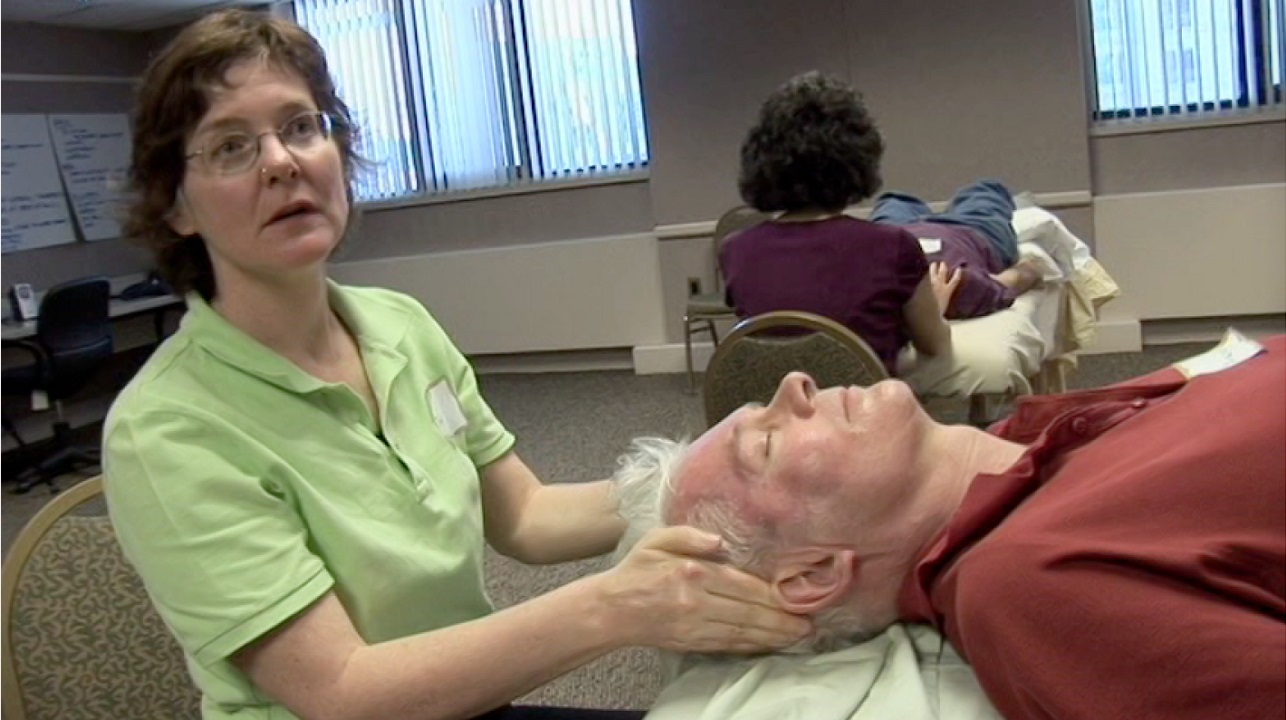Learn to use touch in caring and strengthen your relationship
Learn to use touch in caring and strengthen your relationship
by Heather Wiseman
Wednesday, December 21, 2016
An online program which teaches carers how to use touch to support friends or family with life-limiting illness has potential to enhance relationships, according to the US caregiving expert who designed it.
Dr William Collinge created the Touch, Caring and Cancer program and ran a trial which demonstrated its effectiveness in reducing pain, nausea, stress and anxiety over four weeks. The study, published in Supportive Care in Cancer, found that trained carers can produce positive effects comparable to those achieved by professional massage therapists, enabling carers to feel empowered and improving their relationship with the patient.
Australian interest in the program has grown since Dr Collinge presented as a keynote speaker at the Oncology Massage Conference in Canberra earlier this year.
He said one couple who participated in the research told Dr Collinge it was the first time they had touched in 10 years.
“They were an older couple but they had fallen into this routine of being room-mates and touch had fallen away from their relationship. The woman had developed cancer and they got involved with this project. They were restoring or rekindling their relationship after 40 years and having raised children.”
Dr Collinge said the program’s techniques are not specific to cancer and can be used to improve relaxation and comfort in many palliative care patients. It includes a safety precautions checklist, which covers an extensive range of medical conditions and the safety precautions that apply.
He said while the program teaches simple massage techniques for the head, neck, shoulders, back, feet and hands, it does not aim to train people to become massage therapists.
The program focusses heavily on communication, encouraging carers and patients to discuss honestly how illness has changed their relationship. Dr Collinge said open communication is crucial, as patients must be comfortable to explain what works and what doesn’t, and any fears or concerns they have about the use of touch.
“Are they afraid to tell the carer what they need because they don’t want to overburden the carer? Maybe they feel the carer is over-stressed already so they avoid sharing their needs.
“Then, you can have the reverse, where the carer doesn’t know how to help and is afraid to do anything because they don’t want to do anything wrong. They may be afraid to touch the patient because they don’t know what is safe.”
He says patients need to be confident they can give feedback without hurting the carer’s feelings. If they are uncomfortable, maybe because of too much pressure, they may be reluctant to be massaged again.
“Really clear communication not only helps the use of touch to be effective but it also helps the communication in their relationship and it is the basis of any intimate relationship,” he said.
“And so a lot of couples dealing with cancer end up improving the quality of their relationship and growing closer together through this journey together.”
Dr Collinge was inspired to develop the program after working for a cancer support program. He wanted carers to benefit from being able to contribute meaningfully and make a difference, which is important in reducing their stress.
“I remember the husband of a breast cancer patient saying ‘I just wish that I could reach into her body and pull the cancer out because I feel so helpless’. We know from the general research that feelings of helplessness are a high cause of carer stress,” he said.
“There was another couple where the patient had stage four cancer and ended up dying. I received a letter from the husband thanking us for including them in the project because instruction in touch enabled him to stay in contact with her and enabled them to touch right up until the end of her life.
“She died in hospice care but he was able to feel connected with her, using these techniques right up to the very end.
“Many people in hospice end up being isolated or removed from human contact or their loved ones who maybe gather around them when they are dying, but don’t really know how to touch them and feel awkward about touching them.
“This is a way of doing something proactive which enables the carer to do something good and impactful; that can be really lovely right up until the very end.”
Dr Collinge said a cancer diagnosis can increase inhibition in couples who find touch an obstacle, as they become concerned about causing pain, discomfort or harm.
He says having the program available to families online as streaming video and downloadable ebook made it useful for people living in rural or remote areas without access to a professional oncology massage therapist. While a professional massage therapist would deliver a more sophisticated and skilful massage, similar therapeutic benefit stemmed from receiving more regular massages from an informed carer.
“If you have a carer at home who can do this for you three or four times a week you have a cumulative benefit over time.”
